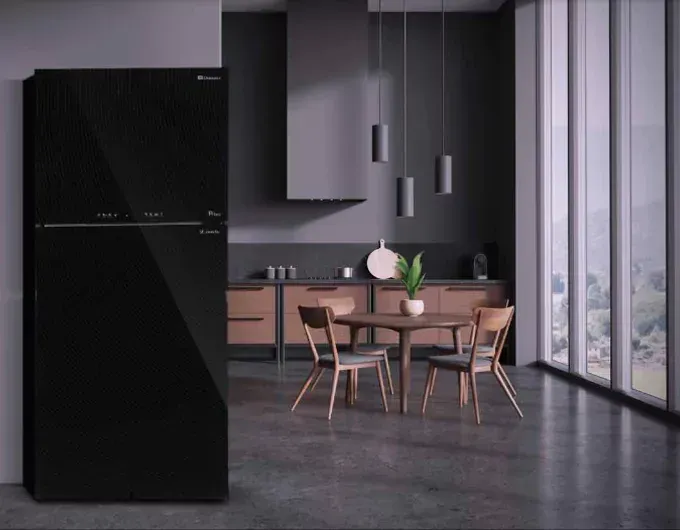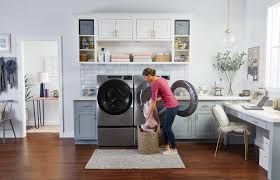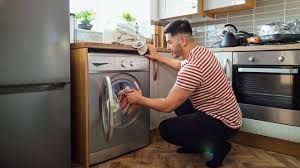Mastering Appliance Repair: Expert Insights for a Well-Functioning Home
In the modern household, appliances play a pivotal role in ensuring comfort and convenience. From refrigerators keeping food fresh to washing machines handling our laundry, these machines are integral to our daily lives. However, when these appliances malfunction, it can disrupt the entire household. Mastering appliance repair is not only about saving money but also about maintaining the efficiency and longevity of these essential devices. This article provides expert insights into appliance repair, offering tips and techniques to keep your home running smoothly.
Understanding the Basics
1. Common Appliance Issues
Before diving into repair techniques, it's important to recognize common issues that affect household appliances. Here are some frequent problems:
- Refrigerators: Issues like insufficient cooling, ice buildup, and water leakage.
- Washing Machines: Problems include failure to spin, water leakage, and unusual noises.
- Dishwashers: Common issues are poor cleaning, water not draining, and door latch problems.
- Ovens/Stoves: Issues such as uneven heating, burners not igniting, and temperature control problems.
2. Diagnostic Techniques
Effective appliance repair begins with accurate diagnosis. Here are steps to diagnose issues:
- Visual Inspection: Look for obvious signs of damage or wear.
- Sound Analysis: Unusual noises can indicate specific problems.
- Error Codes: Many modern appliances display error codes; refer to the manual to decipher these.
- Functional Tests: Operate the appliance to understand the nature of the problem.
Tools and Safety Measures
1. Essential Tools for Appliance Repair
Having the right tools is crucial for any repair job. Here’s a list of must-have tools:
- Multimeter: For checking electrical connections.
- Screwdrivers: Various sizes and types for different screws.
- Pliers and Wrenches: For gripping and turning components.
- Nut Drivers: Specifically for hexagonal nuts.
- Flashlight: To see clearly in dark or enclosed spaces.
- Vacuum Cleaner: To remove dust and debris from appliances.
2. Safety Precautions
Safety should always be a priority when repairing appliances. Follow these guidelines:
- Unplug Appliances: Always disconnect the power supply before starting any repair.
- Protective Gear: Wear gloves and safety glasses to protect against injuries.
- Work in a Well-Ventilated Area: Especially important when dealing with gas appliances.
- Read Manuals: Familiarize yourself with the appliance manual and safety instructions.
- Check for Gas Leaks: When working with gas appliances, ensure there are no leaks before starting repairs.
Step-by-Step Repair Techniques
1. Refrigerator Repair
Issue: Refrigerator Not Cooling
- Check Temperature Settings: Ensure the thermostat is set to the correct temperature.
- Clean Condenser Coils: Dusty coils can hinder cooling. Clean them with a vacuum or brush.
- Inspect Door Seals: Damaged seals can allow cold air to escape. Replace if necessary.
- Check the Evaporator Fan: Ensure it is running; replace if faulty.
Issue: Water Leaking
- Inspect the Drain Pan: Empty and clean the drain pan.
- Check the Defrost Drain: Clear any clogs in the drain to prevent overflow.
- Examine Water Supply Lines: Look for cracks or leaks in the water supply lines and replace if needed.
2. Washing Machine Repair
Issue: Washer Not Spinning
- Balance the Load: Uneven loads can prevent spinning. Redistribute clothes evenly.
- Inspect the Lid Switch: If faulty, the washer may not spin. Test and replace if needed.
- Examine the Drive Belt: A broken belt can stop the drum from spinning. Replace the belt if damaged.
Issue: Water Leakage
- Check Hoses: Inspect inlet and drain hoses for leaks. Tighten connections or replace if necessary.
- Inspect the Pump: A faulty pump can cause leaks. Replace if defective.
- Examine the Door Seal: Front-load washers can leak if the door seal is damaged. Clean or replace the seal.
3. Dishwasher Repair
Issue: Dishes Not Cleaning Properly
- Clean Spray Arms: Clogged spray arms can affect cleaning. Remove and clean them thoroughly.
- Check Water Temperature: Ensure the water heater is set to at least 120°F for optimal cleaning.
- Inspect the Detergent Dispenser: Make sure it opens properly and is not blocked.
Issue: Water Not Draining
- Clean the Filter: A clogged filter can prevent drainage. Remove and clean the filter.
- Check the Drain Hose: Ensure it is not kinked or clogged.
- Inspect the Drain Pump: Test the pump for functionality and replace if faulty.
4. Oven/Stove Repair
Issue: Oven Not Heating Properly
- Check the Heating Element: Inspect for signs of damage. Replace if broken.
- Test the Thermostat: Use a multimeter to check for continuity. Replace if defective.
- Inspect the Igniter (Gas Ovens): Ensure it is working properly and replace if necessary.
Issue: Burner Not Igniting (Gas Stoves)
- Clean the Burner: Remove and clean any debris or spills from the burner.
- Check the Spark Ignition System: Inspect for visible damage and test with a multimeter. Replace if needed.
- Examine the Gas Supply: Ensure there is no interruption in the gas supply.
Maintenance Tips for Longevity
Proper maintenance can prevent many common appliance issues and extend the lifespan of your devices. Here are some general maintenance tips:
- Regular Cleaning: Keep appliances clean, both inside and out, to prevent buildup and corrosion.
- Routine Inspections: Periodically inspect appliances for wear and tear and address minor issues promptly.
- Follow Manufacturer Guidelines: Adhere to the maintenance schedules and instructions provided in the appliance manuals.
- Use Appliances Properly: Avoid overloading machines like washers and dishwashers, and use the correct settings for each load.
- Keep Vents and Filters Clean: Regularly clean or replace filters and ensure vents are free from obstructions.
When to Call a Professional
While many repairs can be handled by a skilled DIY enthusiast, some situations require professional intervention:
- Complex Electrical Issues: If the problem involves complex wiring or circuitry, it’s safer to call a professional.
- Gas Appliances: Repairs involving gas can be hazardous. It’s best to leave these to certified technicians.
- Warranty Concerns: If your appliance is still under warranty, DIY repairs might void the warranty. Check with the manufacturer first.
Appliance Repair Mastery
Mastering appliance repair is a valuable skill that can save you time, money, and frustration. By understanding common issues, employing proper diagnostic techniques, and following step-by-step repair methods, you can keep your household appliances in top working condition. Remember to prioritize safety, use the right tools, and know when to call a professional. With these expert insights, you’ll be well-equipped to maintain a well-functioning home.
You might also like
Educational Center
Book a Service Today
We will get back to you as soon as possible
Please try again later
Quick & Reliable
We are available 24/7
About Us
Authorized Appliance is an appliance repair contractor referral service. We connect you with appliance contractor in your area. All contractors are operated independently of Authorized Appliance. It is the responsibility of each user to verify that the contractor connected with meets all licensing and insurance requirements in that jurisdiction.
All Rights Reserved - Authorized Appliance




